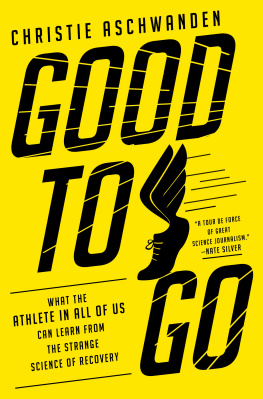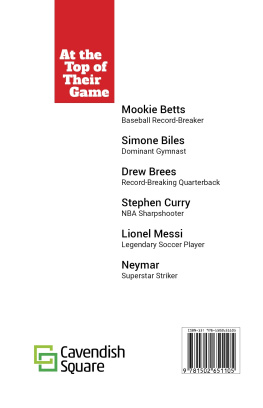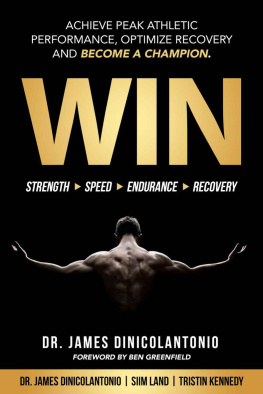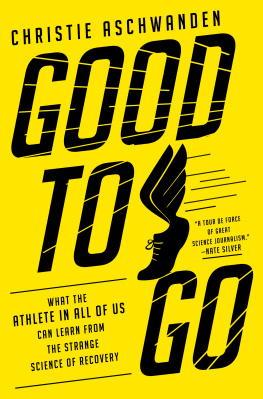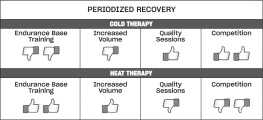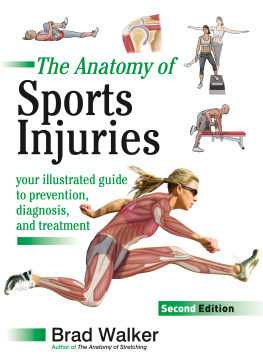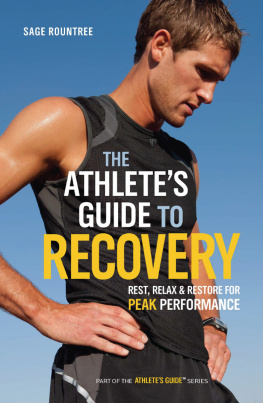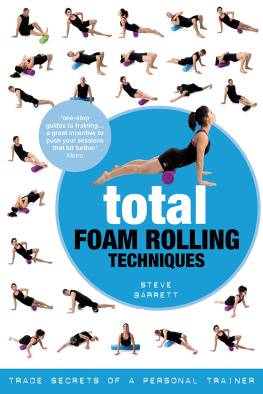
GOOD
TO GO
GOOD
TO GO
What the Athlete in All of Us Can Learn from
the Strange Science of Recovery
Christie Aschwanden

W. W. Norton & Company
Independent Publishers Since 1923
New York | London
For Dave
I was feeling pretty spent on the Saturday morning in late summer when I first visited Denver Sports Recovery. Id just finished a 5K race, which Id sprinted hard enough to win. My first-place finish was less impressive than it soundsthe event was billed as a beer run, with the emphasis in that order. The start/finish line was in front of a microbrewery that served free pints afterward. A guy in his twenties with the scrawny build of a distance runner and a cross-country shoe icon tattooed on his leg was the only other person I saw bothering to warm up for the race. I didnt care if we were the only two pushing the pace. I was on a summer-long mission to run a fast 5K, so I was running against myself and the clock. I finished with all I had, and afterward, my middle-aged legs were pounding and aching. Tempting as it was, I decided to skip the beer. I lacked a designated driver and it seemed like a good time to head over to Denver Sports Recovery and to try out their motto: Recover like a pro!
Tucked into an upscale district near downtown, Denver Sports Recovery, with its understated gray exterior, could easily be mistaken from the street for a yoga studio or CrossFit gym (or box, as theyre called). I stepped inside to discover a playground for rejuvenation, equipped with every gadget and tool athletes and exercisers might need to practice the art of recovery. A rack along one wall held an array of rollers, balls, and other devices meant to squish, press, and massage achy muscles, and a spacious floor area offered room to stretch and experiment with a collection of muscle massagers. Therapy tables and lounge chairs were lined up in rows leading to a set of hot and cold tubs. An upstairs alcove held a hyperbaric (pressurized oxygen) chamber and there was a sauna and a cryotherapy tank, which uses liquid nitrogen to cool sore muscles. In an adjacent lounge painted to look like a forest, a companion business offered a chance to lie in the comfort of a recliner while receiving an IV filled with vitamins and anti-inflammatories purported to aid recuperation.
In the main recovery space, framed and autographed jerseys adorned the wallsone from former Colorado Rockies pitcher Matt Belisle, a Broncos jersey from Wes Welker, and a Jason Richardson jersey from his time with the 76ers, among others. A poster near the entry listed the available recovery tools: sauna, hot/cold contrast, compression therapy, vibration therapy, Bio-Mat, soft tissue tools, E-Stim, Marc Pro, and infrared therapy.
Before I could get lost in the sea of unfamiliar choices, a cheerful, athletic, ponytailed woman in her twenties welcomed me and said shed be my recovery assistant. She handed me a clipboard, a pen, and a two-page form that was a mashup of the kind of checklist you get at a doctors office and the enrollment form you get at a gym. What sports did I do? Did I have any injuries? Would I be wanting any physical therapy or massage today? After looking over my answers, my assistant asked how much time I had, then laid out a plan for me. I would spend well over an hour doing a bunch of stuff that would help me recover from an event that, if you throw in my warm-up and cool-down, had lasted maybe 45 minutes.
My visit, she said, would involve four recovery techniques, or modalities as theyre known in recovery speaksoft tissue work, electrical stimulation, compression, and vibration. (Next time, she said, I could try some of the others, like the contrast baths or cryotherapy.) To begin, she gave me what looked like two roller skate wheels, about a foot apart and connected with a padded axel, and instructed me to roll my foot back and forth on the axel. It felt nicelike a self-administered foot ruband reminded me of the wooden foot rollers sold in drug stores and those catalogs found in the seat-back pockets of airplanes. After Id given my feet a good rubdown, she moved me to a larger version of the roller, which was wider and affixed on larger wheels. Pressing my calves onto the padded cylinder, I rolled my leg back and forth, from my ankles to my knees. Having just run a pretty hard race, I felt soothed to rub my muscles like this.
While I rolled around on the floor contorted like a dog scratching itself in the dirt, my helper explained that the purpose of this rubbing and mashing was to release tension in the fascia around my muscles. Fascia is connective tissue that surrounds the muscles, and the idea behind rollingwhether with one of the fancy rollers at DSR or with a less exotic foam roller that youd find at a physical therapists office or yoga studiois that it increases blood flow to the fascia and works out adhesions that might form. Thats the theory, anyway, and the scientific-sounding explanation gave me license to pretend it was perfectly normal to come here to vigorously rub my body with exotic toys. I couldnt say whether I really had adhesions in my fascia or whether the rolling worked them out. But it did feel pretty nice on my sore muscles.
From the big roller, we moved to something smallera padded sphere about the size of a tennis ball, but not as soft. You put this under here, my helper demonstrated, sticking the ball under her butt and then rolling back and forth on it as in some kind of dance move. The idea, she said, was to massage my piriformisa muscle deep in my butt. The other rolling had felt good, but this motion hurt. It felt like I was sitting on a very hard tennis ball and jabbing it into my butt, which is pretty much exactly what I was doing. When I told my helper that this was painful, her face brightened. Oh good, she saidyouve found a sore spot. Personally, I wasnt so excited. Id come here to relieve the pains I knew about, not find new places to hurt. I hadnt even remembered that I had a piriformis until I mashed the ball into it, so when she wasnt looking, I pulled the ball out from under me.
Unlike my piriformis, my hamstrings are an ongoing source of agony, so when my recovery assistant suggested that I try electrical stimulation on them, I was game. While I lay stomach-down on a massage table, she attached electrodes to my hamstrings with sticky patches smeared with a cold gel. The electrodes connected to an e-stim machine that sent electrical pulses to my muscles. For the next 25 minutes, the machine took over my hamstrings, and without any thought or effort from me, my leg muscles contracted and relaxed in a steady rhythm. I kept expecting my leg to involuntarily kick up from the table, but that never happened. As surreal as it was to feel my leg muscles firing on the machines command, it wasnt exactly unpleasant. After a while, I had so completely ceded control to the machine that I had stopped feeling its twitches, and by the end of my session I was on the verge of falling asleep.
I moved to the pneumatic compression boots, which are like individual sleeping bags for your legs that envelop the feet and zip up to the waist. At the turn of a switch, the bags inflated to squeeze my muscles, and presumably increase the circulation in my legs, which my aide said would reduce inflammation and lactic acid. The squeezy pants had numerous available settings, but I tried the one that pulsed in a predictable sequence. The squeezing began at my toes and feet, then moved up to my calves, knees, then upper legs, as if squeezing toothpaste from a tube. Once the entire leg was compressed for a few minutes, the pouches began to gently deflate, starting with my feet and ending at my thighs. Then the cycle began again. It felt like a very methodical massage, which is to say, it felt great.
Next page
